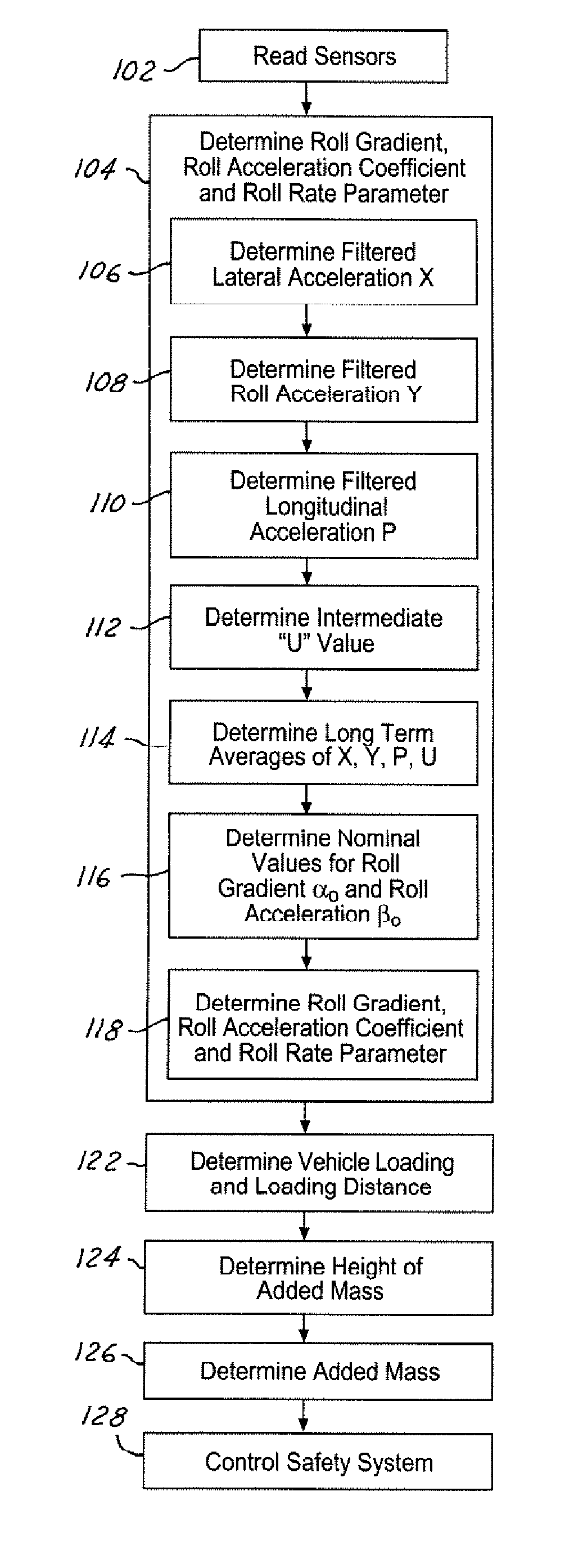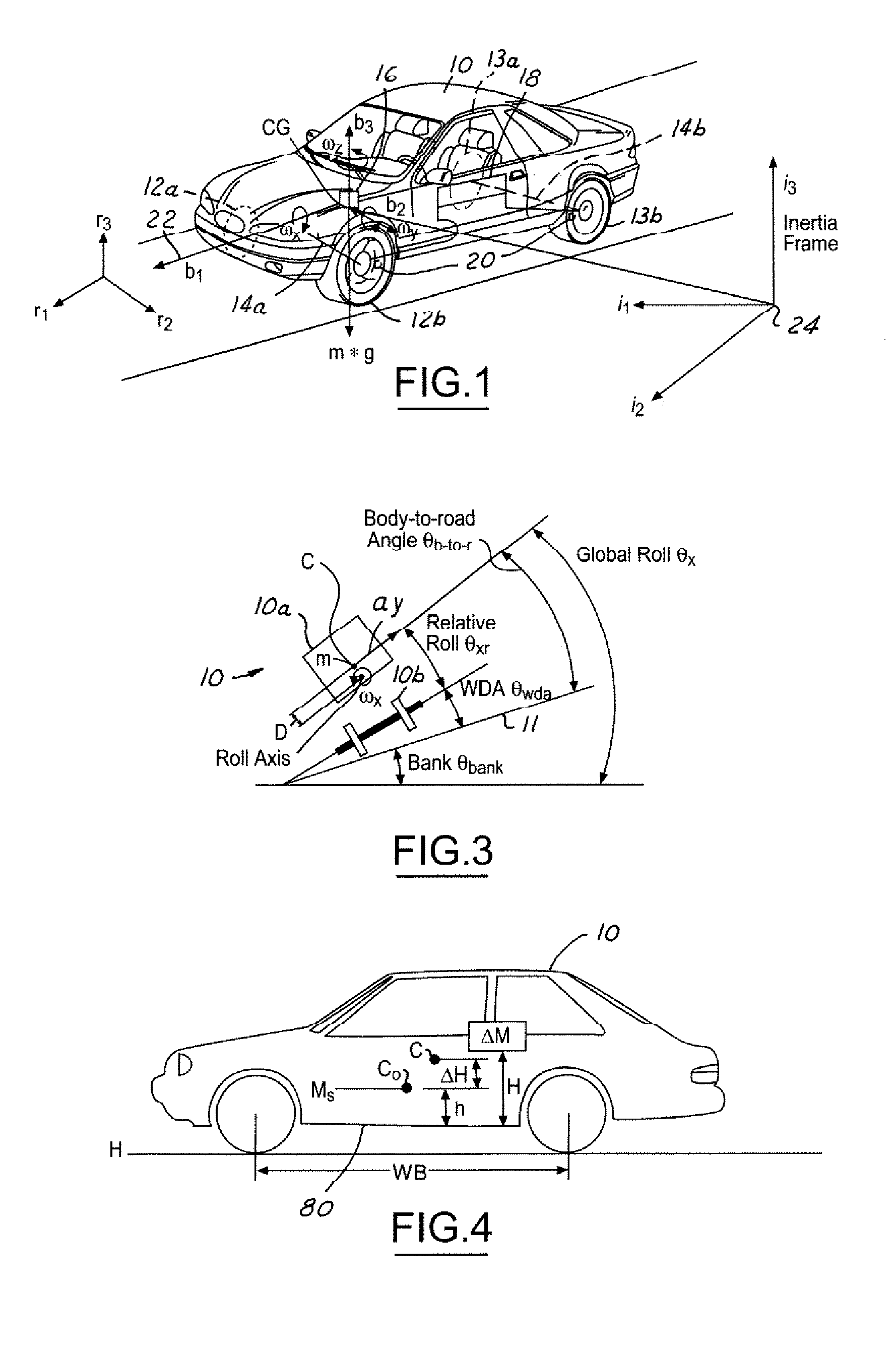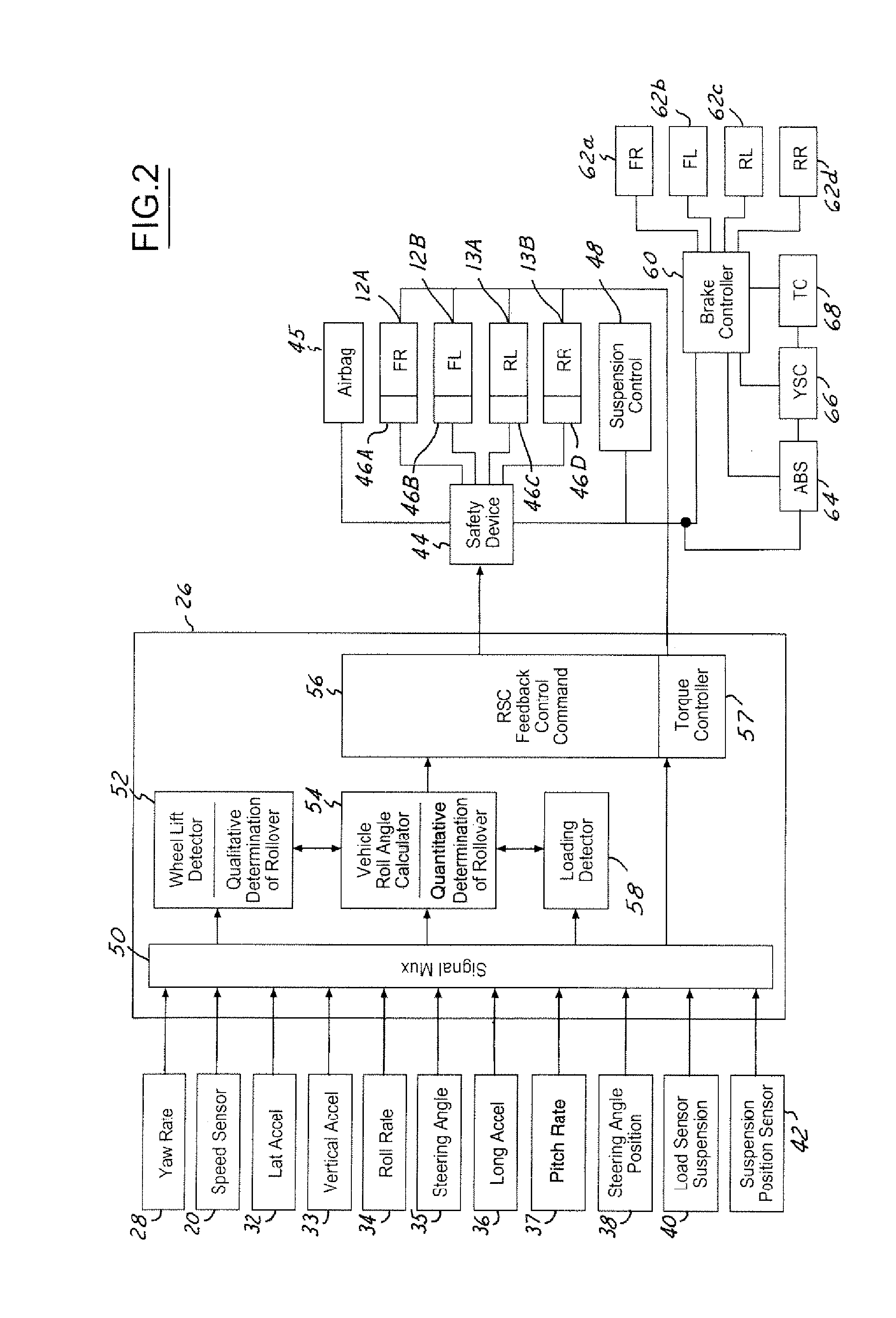System and method for dynamically determining vehicle loading and vertical loading distance for use in a vehicle dynamic control system
a dynamic control system and vehicle technology, applied in the direction of pedestrian/occupant safety arrangement, cycle equipment, instruments, etc., can solve the problems of more than 30% error in relative roll angle calculation, inability to achieve optimal control performance, and variation of the relative roll angle, etc., to achieve the effect of very accurate determination
- Summary
- Abstract
- Description
- Claims
- Application Information
AI Technical Summary
Benefits of technology
Problems solved by technology
Method used
Image
Examples
Embodiment Construction
[0027]In the following figures, the same reference numerals will be used to identify the same components. The present invention may be used in conjunction with a rollover control system for a vehicle. The present invention may also be used with a deployment device such as an airbag or active roll bar. The present invention will be discussed below in terms of preferred embodiments relating to an automotive vehicle moving in a three-dimensional road terrain. The present invention is described with respect to determining an added mass and height of the mass. As will be described below the added mass and height may not be directly determined, rather by adaptively updating a roll gradient value, roll acceleration coefficient, roll moment of inertia and / or a roll rate coefficient, the effects of added mass and the height may be included in those values. Such values may also be referred to as an “adaptive” roll gradient, an “adaptive” roll acceleration coefficient, an “adaptive” roll momen...
PUM
 Login to View More
Login to View More Abstract
Description
Claims
Application Information
 Login to View More
Login to View More - R&D
- Intellectual Property
- Life Sciences
- Materials
- Tech Scout
- Unparalleled Data Quality
- Higher Quality Content
- 60% Fewer Hallucinations
Browse by: Latest US Patents, China's latest patents, Technical Efficacy Thesaurus, Application Domain, Technology Topic, Popular Technical Reports.
© 2025 PatSnap. All rights reserved.Legal|Privacy policy|Modern Slavery Act Transparency Statement|Sitemap|About US| Contact US: help@patsnap.com



